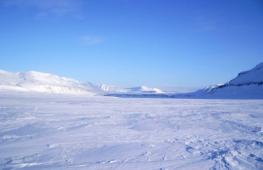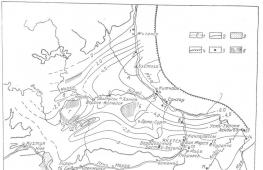Economic activities of people. Human economic activity in natural areas Geography of the main types of economic activity
A person is an inherently purposeful activity, i.e. the efforts made by people are based on a certain calculation, and their direction is in the nature of satisfying human needs.
Economic influences his life activity, because in the process of managing people, on the one hand, spend energy, resources, etc., and on the other hand, they make up for living expenses. In this state of affairs (a person in economic activity) has to strive to rationalize his own actions. It is possible to act rationally only if costs and benefits are correctly compared, which, however, does not guarantee the absence of errors when making decisions that human economic activity requires.
Human economic activity in the biosphere is a very complex and intricate complex, consisting of phenomena and processes of various kinds. Theoretical economics in this aspect distinguishes four stages, represented by production itself, distribution, exchange and consumption.
These are processes that result in the creation of material and spiritual benefits that are necessary for humanity to exist and develop.
Distribution is a process during which the shares (quantity, proportions) are determined, according to which each business entity takes part in the creation of the manufactured product.
Exchange is the process of moving material goods from one economic entity to another. In addition, exchange is a form of social communication between producers and consumers.
Consumption at its core is the process of using production results to satisfy some needs. Each stage of economic activity is interconnected with the others, and they all interact with each other.
Characterizing the relationship between the stages of economic activity requires understanding the fact that any production is a social and continuous process. Constantly repeating itself, production develops - from the simplest forms to Although these seem completely dissimilar, the general points that are inherent in production as such can still be identified.
Production is the basis of life and the source of progressive development of society in which people exist, the starting point of economic activity. Consumption is the final point, and distribution and exchange are the accompanying stages that link production and consumption. Given that production is the primary stage, it serves only for consumption. Consumption forms the final goal, as well as the motives for production, since in consumption products are destroyed, it has the right to dictate a new order to production. If the need is satisfied, it gives rise to a new need. It is the development of needs that serves as the driving force due to the influence of which production develops. At the same time, the emergence of needs is determined precisely by production - when new products appear, a corresponding need for these products and their consumption appears.
Just as production depends on consumption, so distribution and exchange depend on production, since in order to distribute or exchange something, it is necessary that something be produced. At the same time, distribution and exchange are not passive in relation to production, and are capable of having a reverse effect on it.
All natural areas have long been developed by humans. It actively conducts economic activities, thereby changing the characteristics of natural areas. How do human economic activities differ in natural areas?
Polar deserts
These are the most unsuitable regions of Russia for farming. The soil here is permafrost and covered with ice. Therefore, neither animal husbandry nor crop production is possible here. There is only fishing here.
The coastal areas are home to Arctic foxes, whose fur is highly prized throughout the world. Arctic foxes are actively hunted, which could lead to the extinction of this species.

Rice. 1. The most unsuitable natural zone for farming is the Arctic desert
Tundra and forest-tundra
Natural conditions are not much better than in the polar deserts. Only indigenous people live in the tundra. They are engaged in hunting, fishing, and reindeer herding. What changes did the person make here?
The soil of these areas is rich in gas and oil. Therefore, their extraction is actively carried out here. This leads to significant environmental pollution.
Forest zone
This includes taiga, mixed and deciduous forests. The climate here is temperate, characterized by cold winters and relatively warm summers. Thanks to the large number of forests, flora and fauna are widespread here. Favorable conditions allow various types of human economic activities to flourish. A large number of factories and factories have been built in these regions. People here are engaged in livestock farming, farming, fishing, and the woodworking industry. This is one of the natural areas modified by humans to the greatest extent.

Rice. 2. The world is experiencing active deforestation
Forest-steppe and steppe
These natural and economic zones are characterized by a warm climate and insufficient precipitation. The soil here is the most fertile, and the fauna is very diverse. Agriculture and livestock farming flourish most in these areas. Various varieties of vegetables and fruits and cereals are grown here. Coal and iron ore are actively mined. This leads to distortion of the relief and destruction of some species of animals and plants.
TOP 4 articleswho are reading along with this
Semi-deserts and deserts
The conditions here are not the most favorable for human economic activity. The climate is hot and dry. The soil is deserted and not fertile. The main type of economic activity in deserts is animal husbandry. The population here raises sheep, rams, and horses. The need to graze animals leads to the final disappearance of vegetation.

Rice. 3. Livestock farming in the desert
Subtropics and tropics
This region has been the most affected by human activity. This is due to the fact that this is where civilizations arose and the use of these areas has been going on for a very long time.
Subtropical and tropical forests have been practically cut down, and the territories are occupied by agricultural plantings. Huge areas are occupied by fruit trees.
What have we learned?
Man is engaged in economic activities in almost all natural areas of the world. This leads to their significant modification, which ultimately can lead to the extinction of some species of animals and plants.
Test on the topic
Evaluation of the report
Average rating: 4.4. Total ratings received: 362.
More than 10 thousand years ago, people produced almost nothing, but only drew everything they needed from the natural environment. Their main activities were gathering, hunting and fishing. As humanity “matured,” people’s occupations changed greatly.
What is modern farming?
Geography of main types of economic activities
With the advent of new types of economic activities of people, their economies also changed. Agriculture involves growing plants (crop farming) and raising animals (livestock farming). Therefore, its placement strongly depends on both the characteristics of these living organisms and natural conditions: relief, climate, soil. Agriculture employs the largest portion of the world's working population - almost 50% But the share of agriculture in total world production is only about 10%.
Industry is divided into mining and manufacturing. The extractive industry includes the extraction of various minerals (ores, oil, coal, gas), logging, fishing and sea animals. Obviously, its placement is determined by the location of the extracted natural resources.
Manufacturing enterprises are located according to certain laws, depending on what products and how they produce.
The service sector is a special part of the economy. Its products, unlike agricultural and industrial products, are not any kind of thing. Services are activities that are important to modern people: education, health care, trade, transport and communications. Enterprises in this area - shops, schools, cafes - serve people. Therefore, the higher the population density, the more such enterprises there are.



